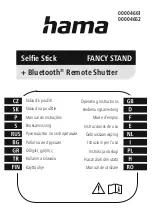
VA6x User’s Reference
405-00022-00
59
Rev 06; 7 April 2011
Distributed Network Configurations
Difficulties can arise when multiple Vision Appliances or multiple Genie Cameras appear on a
network. The fixed IP Addresses of Camera Ports 1 and 2 were designed to avoid this problem, by
not making the cameras visible to the general network.
•
Configuration 1: All cameras are connected (directly) to the Camera Ports on the VA61, (with
or without switches). The cameras are not visible to the other appliances. The LAN port on the
VA61 connects the Appliance to the local network or to a “Machine Network”. Only the Ap-
pliance is directly visible to the PLC.
But some desirable configurations circumvent this design. One example is the “Machine Net-
work” or a local network controlled by a PLC. Another is a VA61 on an office or building network
that has Genie cameras attached to a PC or Appliance, and visible to the VA61 on the network
connection.
•
Configuration 2: All cameras are connected to a “Machine Network” through switches. The
cameras are visible to the PLC, and also visible to all Vision Appliances on the network (or
PCs on the network that have the Sapera Network Vision Software).
Configuration 2 allows the PLC to directly control (trigger) the cameras, but can present some
challenges if there is more than one Vision Appliance present on the Machine Network. The
problems presented, and their solutions, are discussed in the next two sections.
IP Address and Subnet Mask on a Machine Network
IP Addresses that start with 192.168.x.x can use the default Subnet Mask of 255.255.255.0. If
your IP Addresses start with 10.1.x.x you must use a Subnet mask of 255.255.192.0. The default
Subnet Mask value will cause devices to disappear as more peripherals are attached.









































